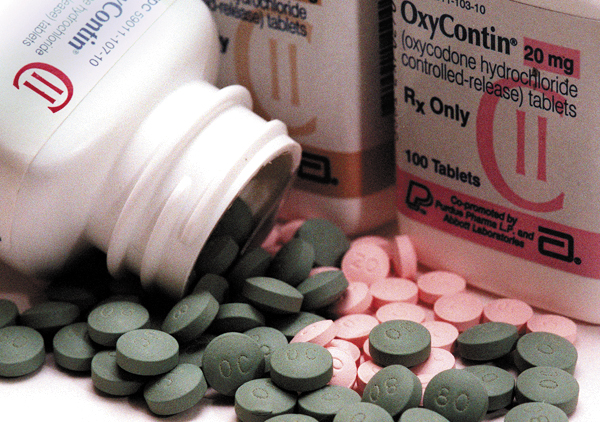Should Roseanne Have Died From an Opioid Overdose?
/By Pat Anson, PNN Editor
Roseanne Barr is the latest victim of America's opioid crisis. Or to be more precise, Roseanne Conner is.
The fictional matriarch of ABC’s cancelled “Roseanne” show was killed off in the opening episode of “The Conners” Tuesday night, with her family struggling to come to terms with her death. What was initially thought to be a fatal heart attack turns out to be an accidental overdose of prescription opioids.
TV audiences had last seen Roseanne Conner hiding her addiction to opioid painkillers while waiting for long-delayed and costly knee surgery. But that storyline ended when Roseanne Barr was fired by ABC for a racist tweet and the network had to come up with a way to explain her absence.
“We firmly decided against anything cowardly or far-fetched, anything that would make the fierce matriarch of the Conners seem pathetic or debased,” Executive Producer Bruce Helford explained in The Hollywood Reporter.
“I wanted a respectful sendoff for her, too: one that was relevant and could inspire discussion for the greater good about the American working class, whose authentic problems are often ignored by broadcast television.”
ABC
"I AIN'T DEAD BITCHES," Barr tweeted after watching the show. She followed up with a longer joint statement with her spiritual advisor, Rabbi Shmuley Boteach.
“We regret that ABC chose to cancel 'Roseanne' by killing off the Roseanne Conner character,” the statement said. "That it was done through an opioid overdose lent an unnecessary grim and morbid dimension to an otherwise happy family show.”
It was also a bit of a cliché. The popular perception that most opioid overdoses are due to prescription painkillers is now largely a myth. According to the Centers for Disease Control and Prevention, nearly 49,000 Americans died from opioid overdoses in 2017, but over half of them were due to illicit fentanyl and heroin, not prescription opioids.
A more accurate way to depict Roseanne’s death would have been through an overdose of heroin or counterfeit painkillers laced with fentanyl. That’s how thousands of Americans are dying. Roseanne Conner could have even been driven to suicide by untreated pain. Imagine what an eye-opening show that would have been.
Instead, the Conner family discovers that Roseanne was hiding painkillers all over the house and sharing them with a group of friends, all of them struggling with pain and addiction. The show makes it appear like opioid medication is easy to obtain, something real pain patients know is no longer true.
The only thing missing from the hackneyed script was someone saying, “If only Roseanne had tried yoga and taken Tylenol, she’d still be alive!”
Executive producer Bruce Rasmussen told Variety last week they thought carefully about how to end Roseanne's character. "You don't want to be flip about how you do this," said Rasmussen.
But that’s exactly how it came across to some PNN readers.
“The media can't seem to get the other side of the story out, nor can they print the truth about exactly how many deaths are the result of PRESCRIPTION opiates,” wrote Stephen Johnston. “Now millions of folks will be watching as more gas is poured onto the fire. That same fire that's burning up what's left of people like myself and millions of others for whom opiate pain medications are the only relief from whatever traumatic accident or terrible malady has befallen them.”
“It was bad enough when they made pain meds a focus of the rebooted show when the first episode of the show's return aired. Now we have the added stigma, as intractable pain people, of them choosing to have Roseanne die from opioid misuse,” said Jack.
“Don't give the writers, actors, producer, the network hacks, etc., anything that isn't OTC when they have occasion to need pain relief — chronic or acute. Tylenol 3's would be much too generous, as many of us don't even get those.”
You can watch the first episode of “The Conners” by clicking here.
























